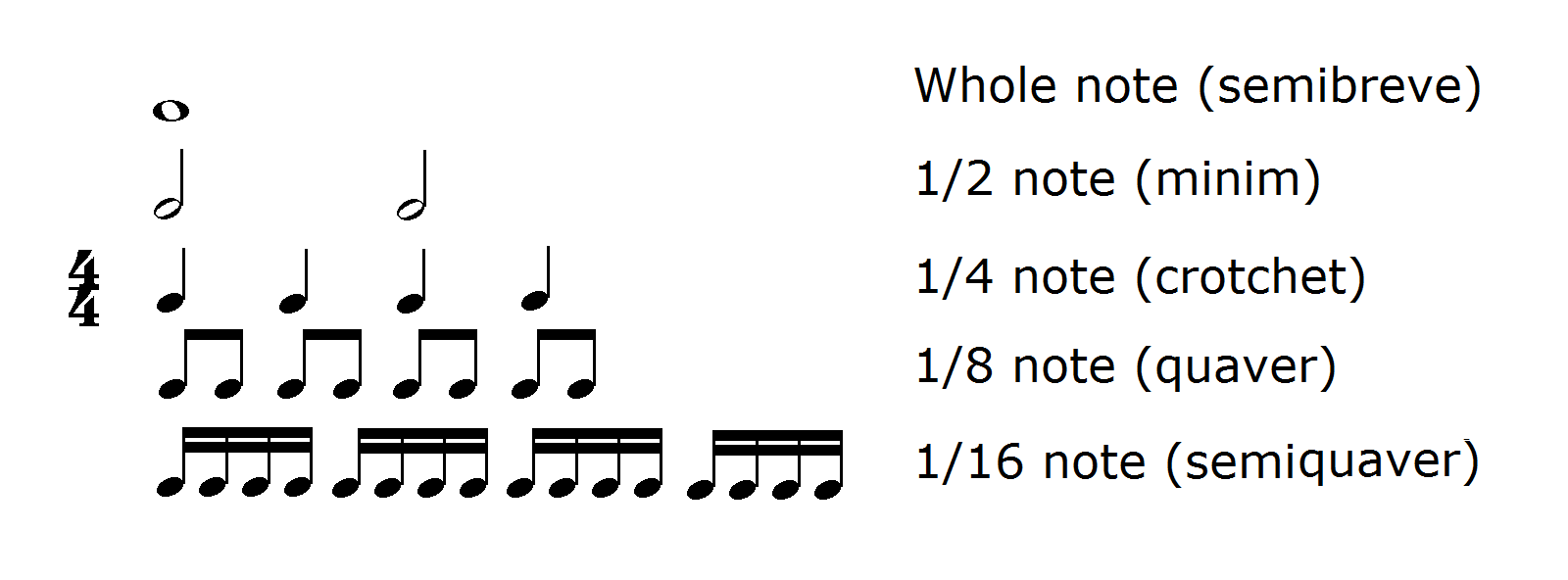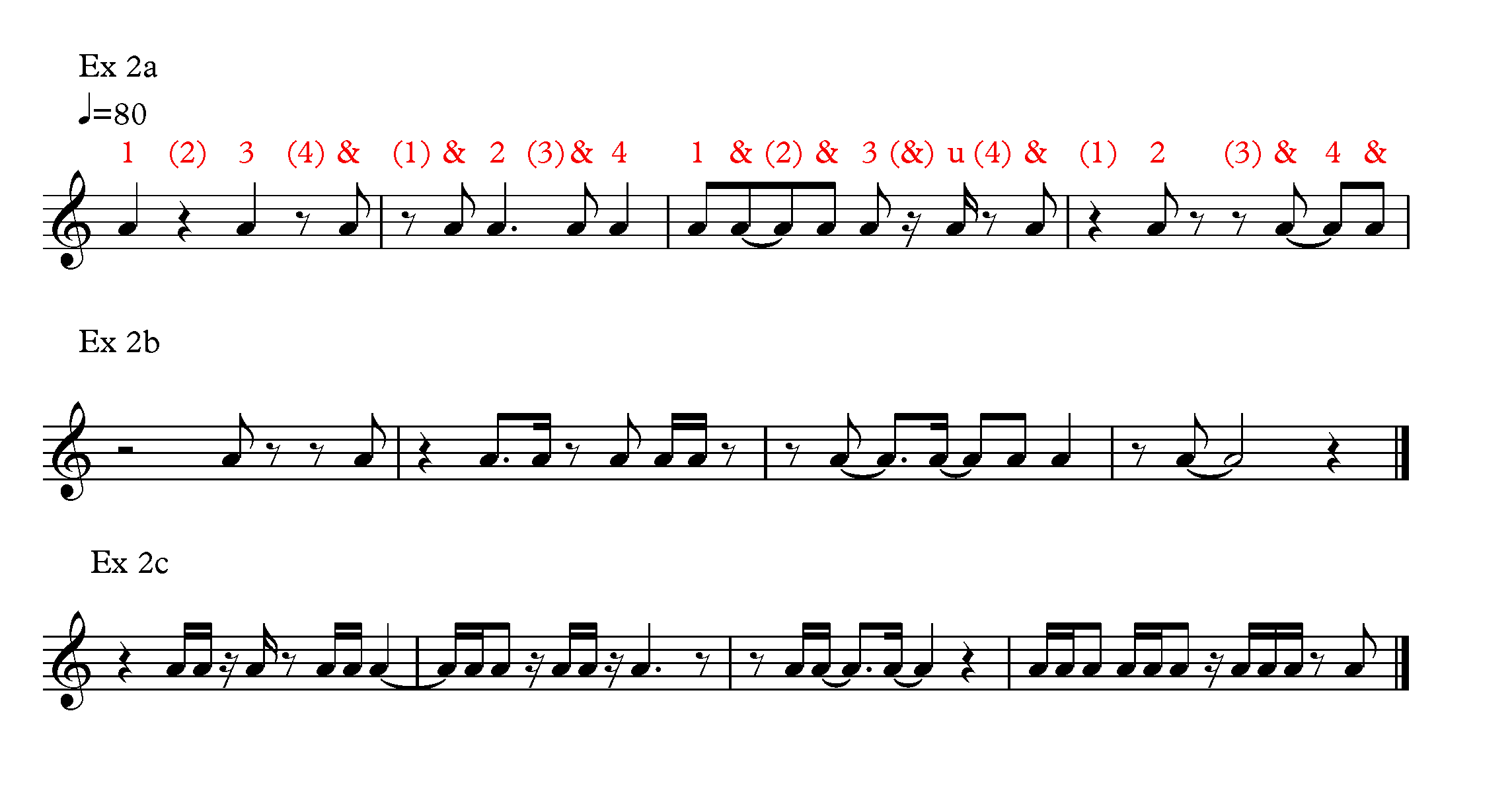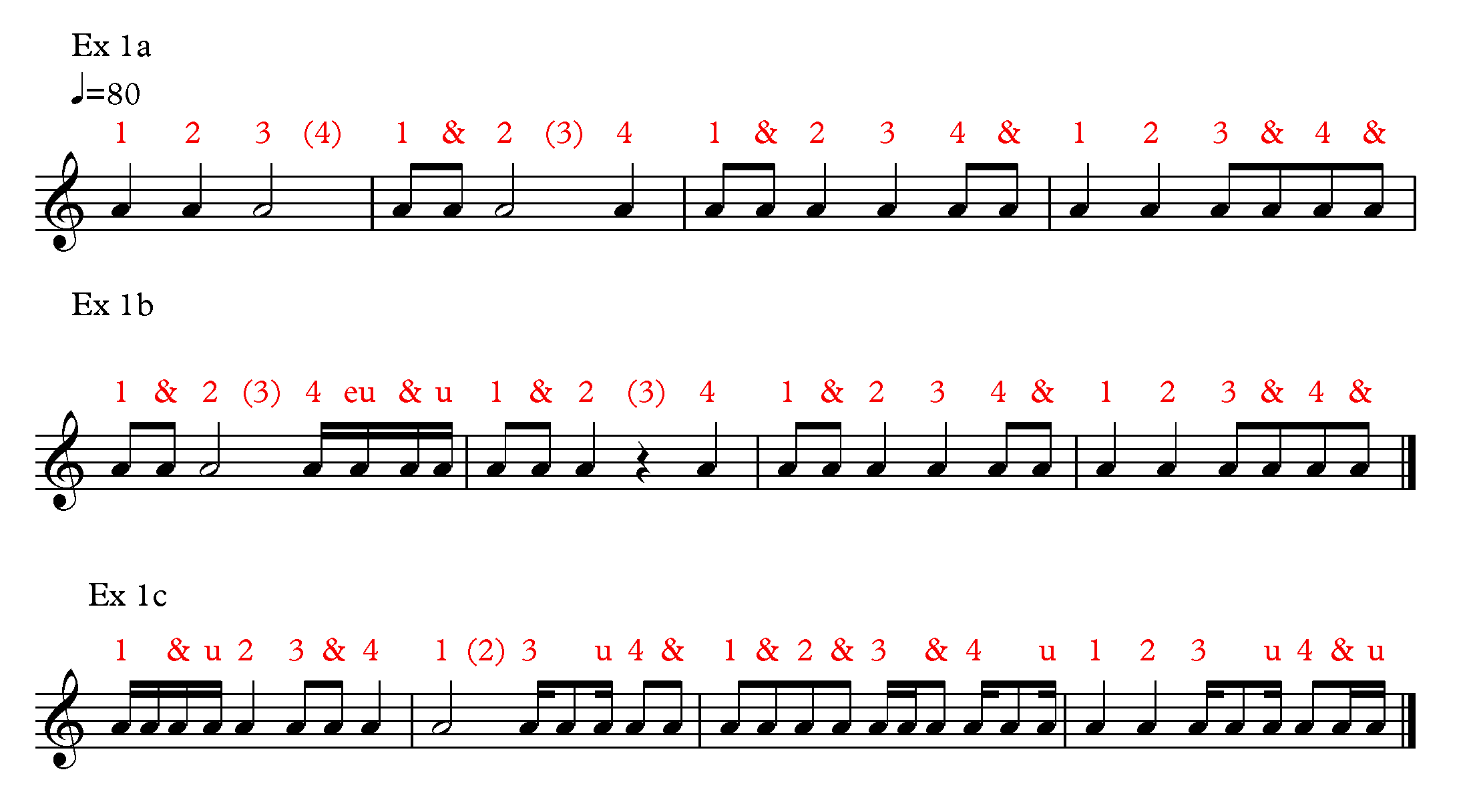Sight Reading Rhythm Part Two
By Rob Thorpe
In last week’s introductory episode of my new series on sight reading for guitar we looked at recognizing pitches on the stave and locating them in first position on the guitar. This week we will examine the fundamentals of reading sight reading rhythm.
First of all, lets look at how a bar of four beats is notated. The first figure breaks up the bar into increasingly smaller note values. From one note lasting the whole bar, to four notes per each beat. There are shorter notes than these, and each time the beat is divided by two again another tail is added to the note stem.

To notate silence we use rests, which follow the same order of subdivisions. The next figure shows all the different rest symbols from whole notes to 16th notes.

As a final thought before we dive into the sight reading rhythm examples, it’s worth considering that while there are only a limited number of different pitch combinations that you may encounter, sight reading rhythm can produce a much wider variety that you will have to decipher. Also, rhythmic mistakes are usually much more noticeable than melodic mistakes so it’s worth developing the instinct early on to just carry on playing in time, ignoring any mistakes you make.
For all of today’s exercises, strum or pick the guitar, or just clap the rhythms.
Example 1a-c
Listen to the audio for example. 1a-c which combines all of the note values used above. I’ve written in how to count the rhythm. Tap your foot to the metronome and listen to whether the notes fall on or between the clicks.
It is a good idea to keep strumming consistently down and up for all these examples and ‘ghost’ over the strings where there are rests. This will help you to maintain a rhythm even you are thrown off by a particular bit of notation.
Example 2a-c
For the second set of sight reading rhythm examples we look at dotted notes and rests. A little dot next to a note head has the effect of giving that note 1.5 times its normal length. For example, a dotted 1/4 is worth one and a half beats.
Try to be able to count the beats while playing a part on your instrument at the same time. It really helps to cement your understanding of phrasing and pulse. As we’ve said, sight reading rhythm is all about being able to reliably carry on, and being able to keep a sense of 1,2,3,4 throughout will help immensely.

Sight reading rhythm notation can feel very tedious and mathematical to start with, but soon you will start to just recognise groups of note values together and instinctively know their sound. Akin to how you recognise words on a page without studying each letter separately.
Next week we will look at combining the two skills of pitch and rhythm reading to try reading some melodic ideas. In the meantime any sheet music can be used to practice rhythm, simply ignore the pitch content!
Recommended Reading: Obviously, listening doesn’t help you here! Joseph Alexander has written a brilliant book of reading exercises for Fundamental Changes Also of benefit for rhythmic studies are percussion books for snare rudiments.
| Read Previous Lesson | Read Next Lesson |
“The artists you work with, and the quality of your work speaks for itself.”
Tommy Emmanuel
© Copyright Fundamental Changes Ltd 2024
No.6 The Pound, Ampney Crucis, England, GL7 5SA

